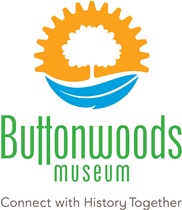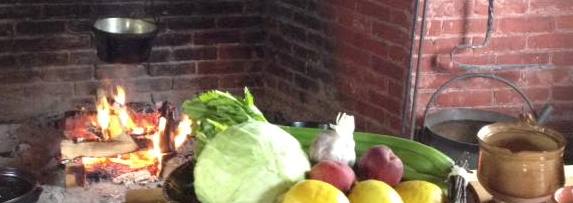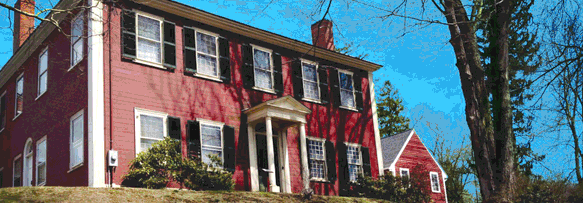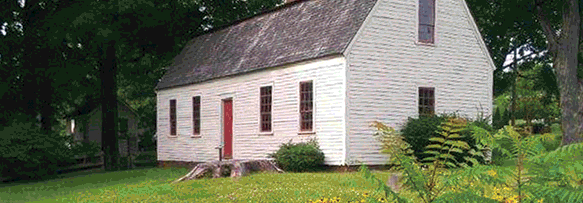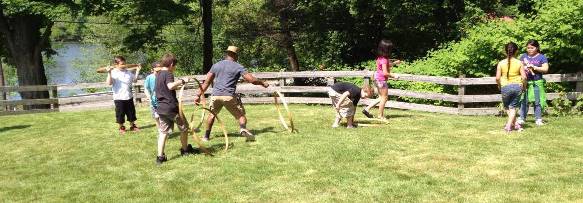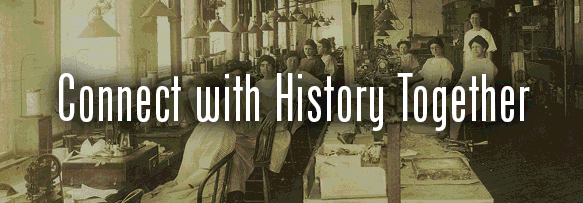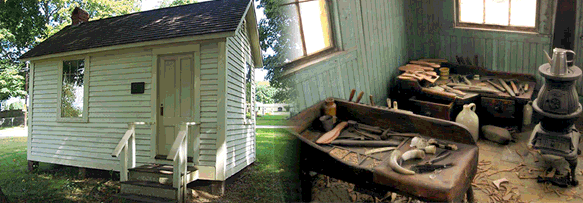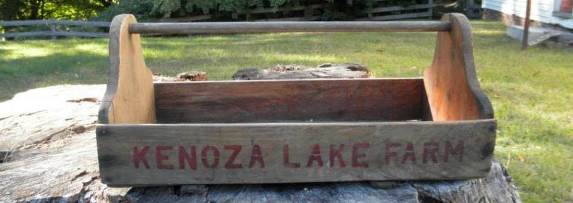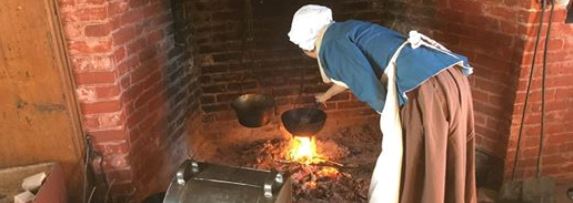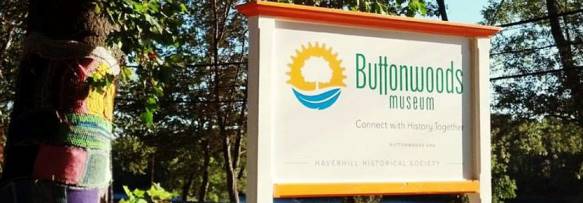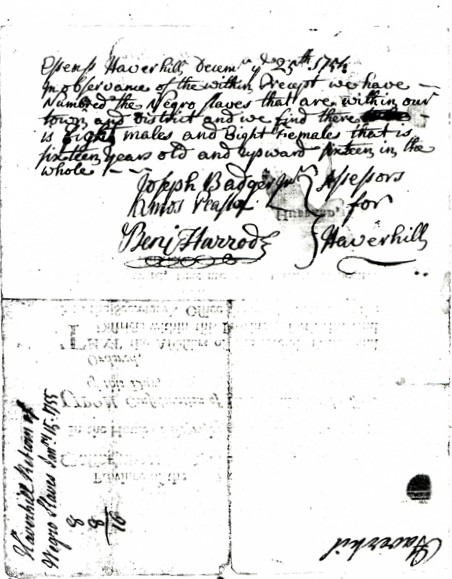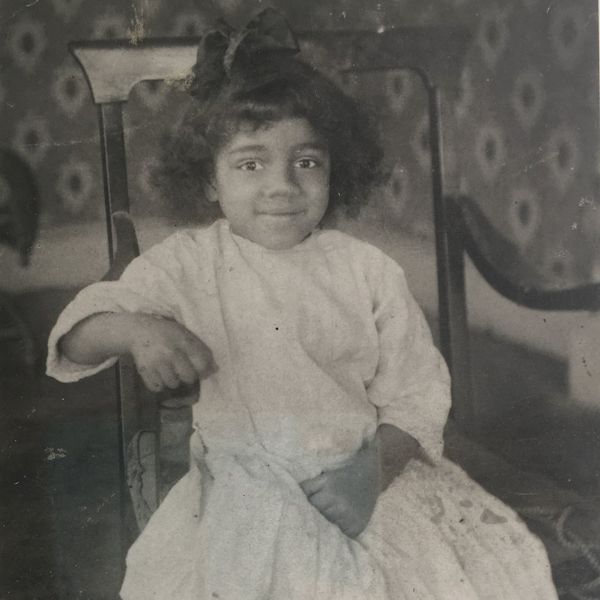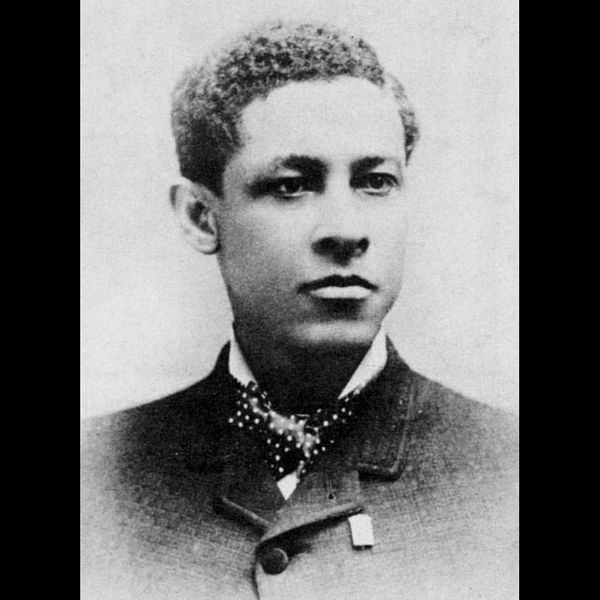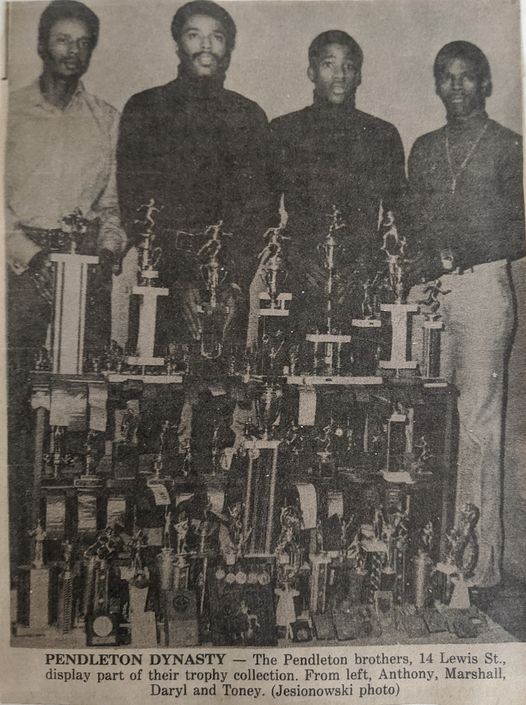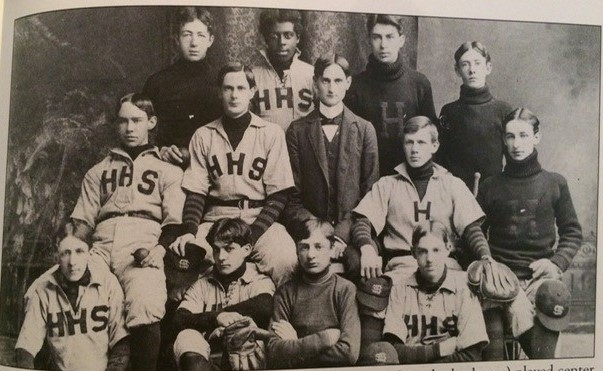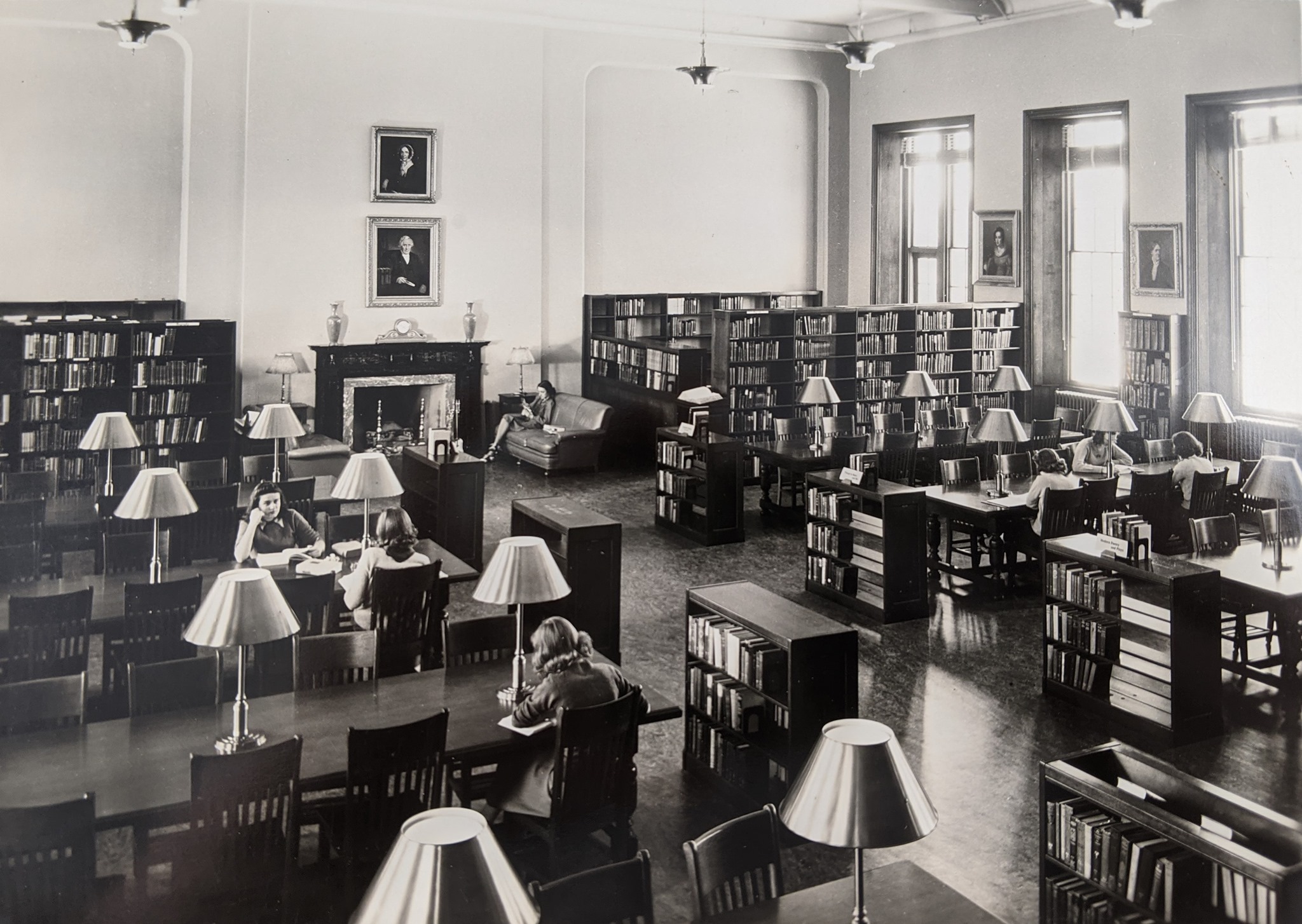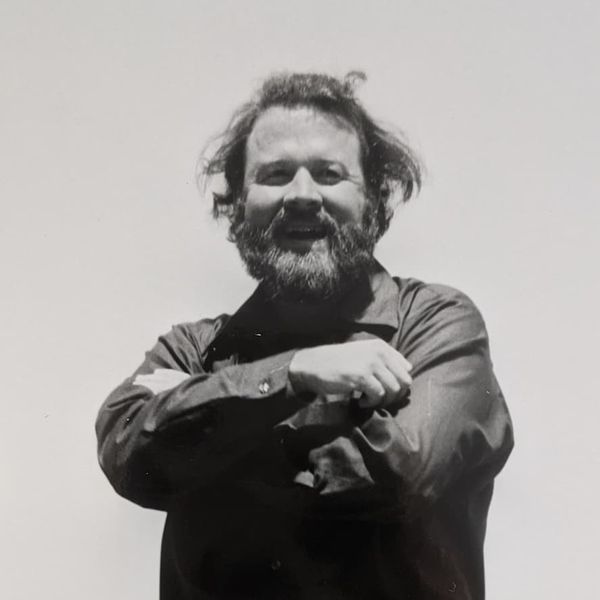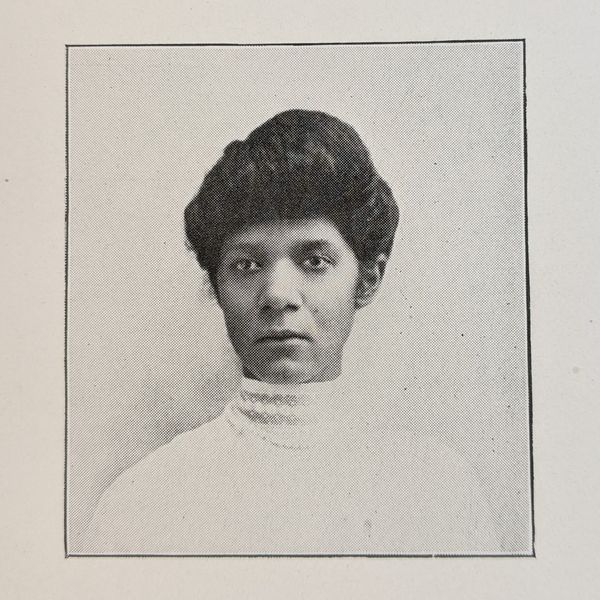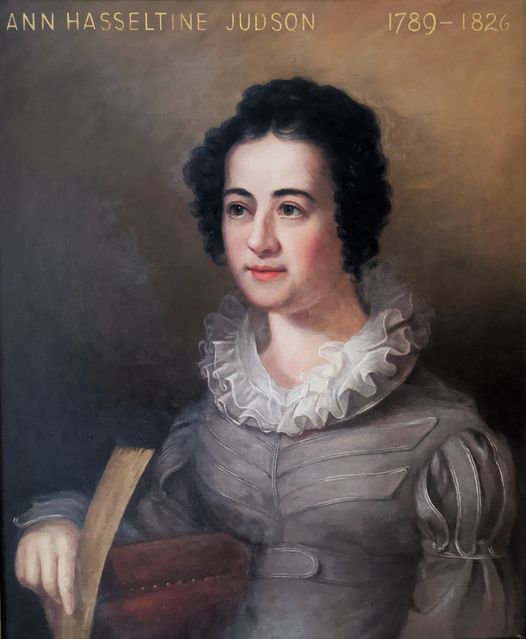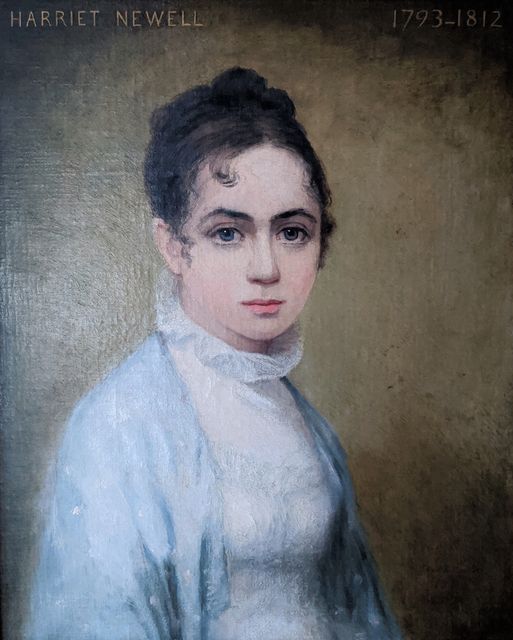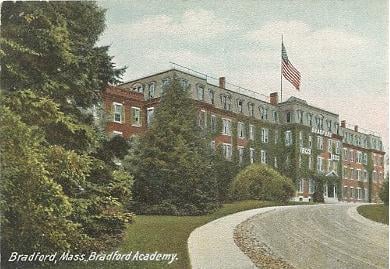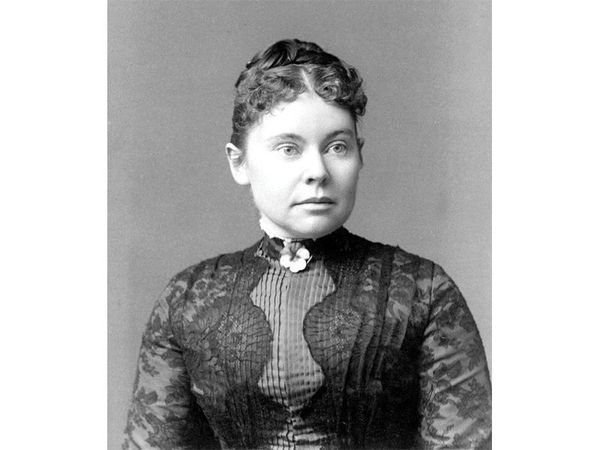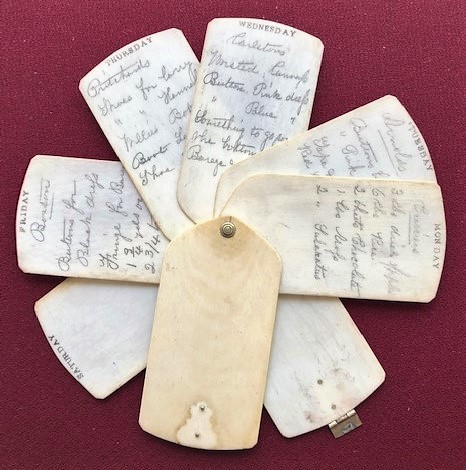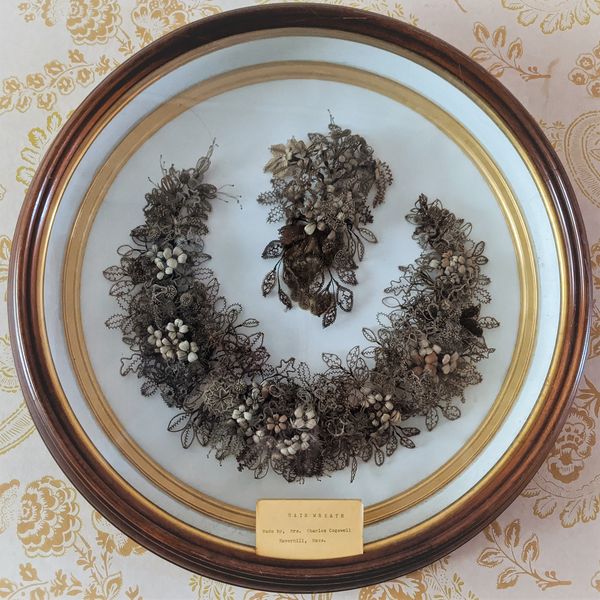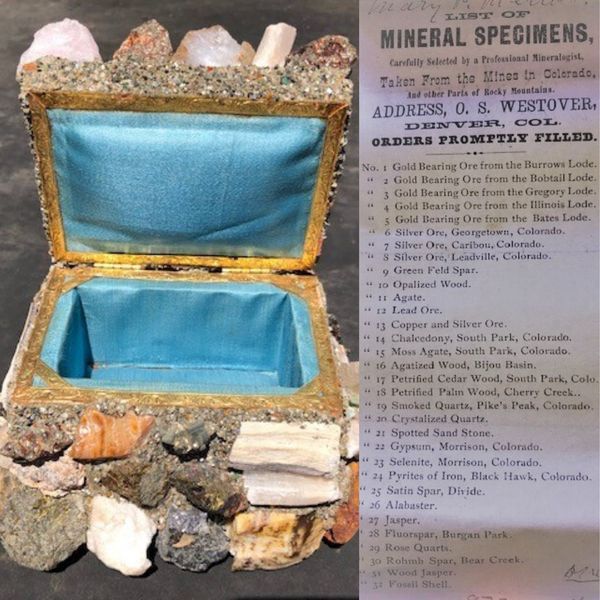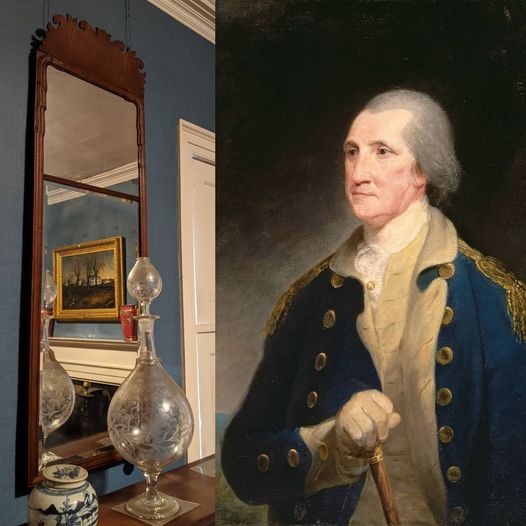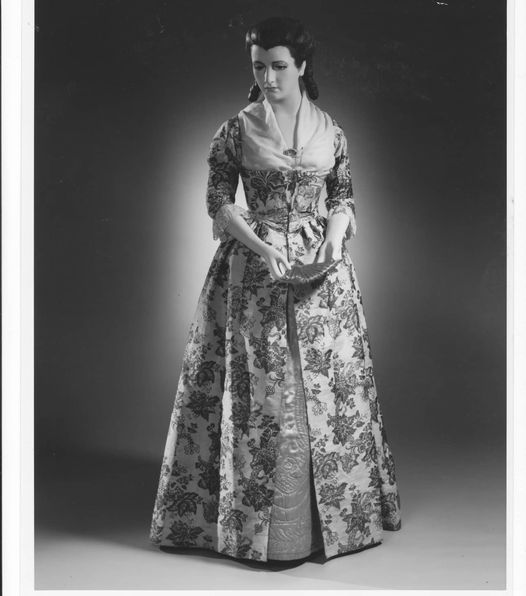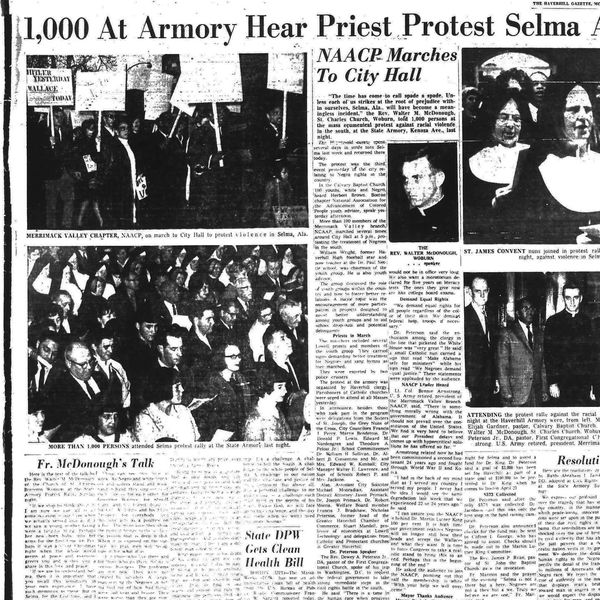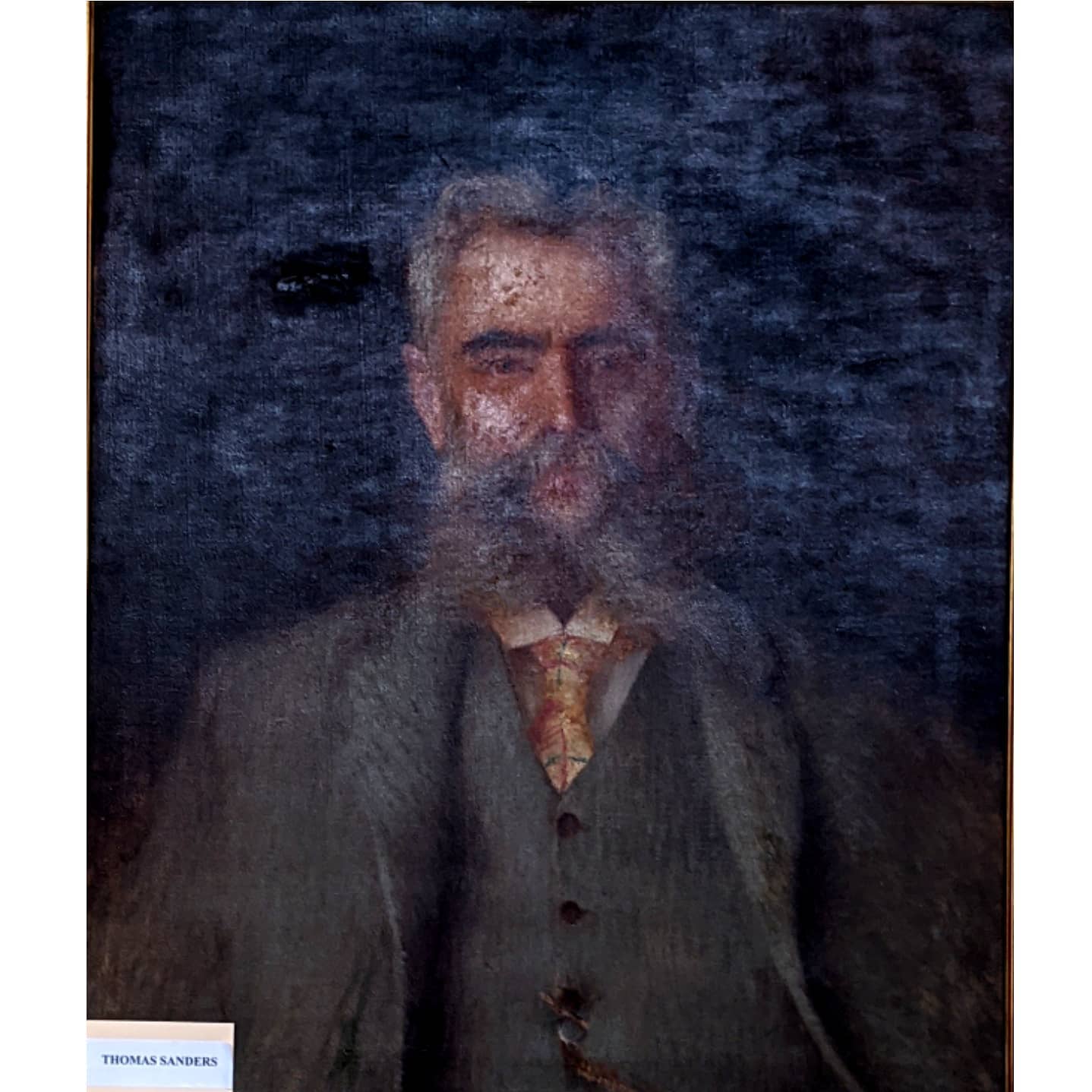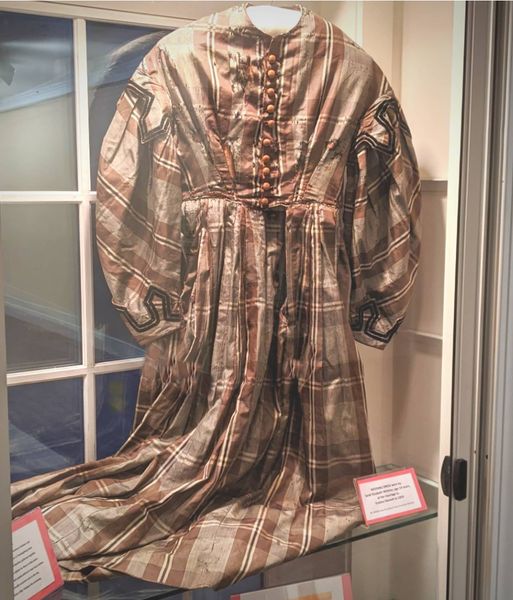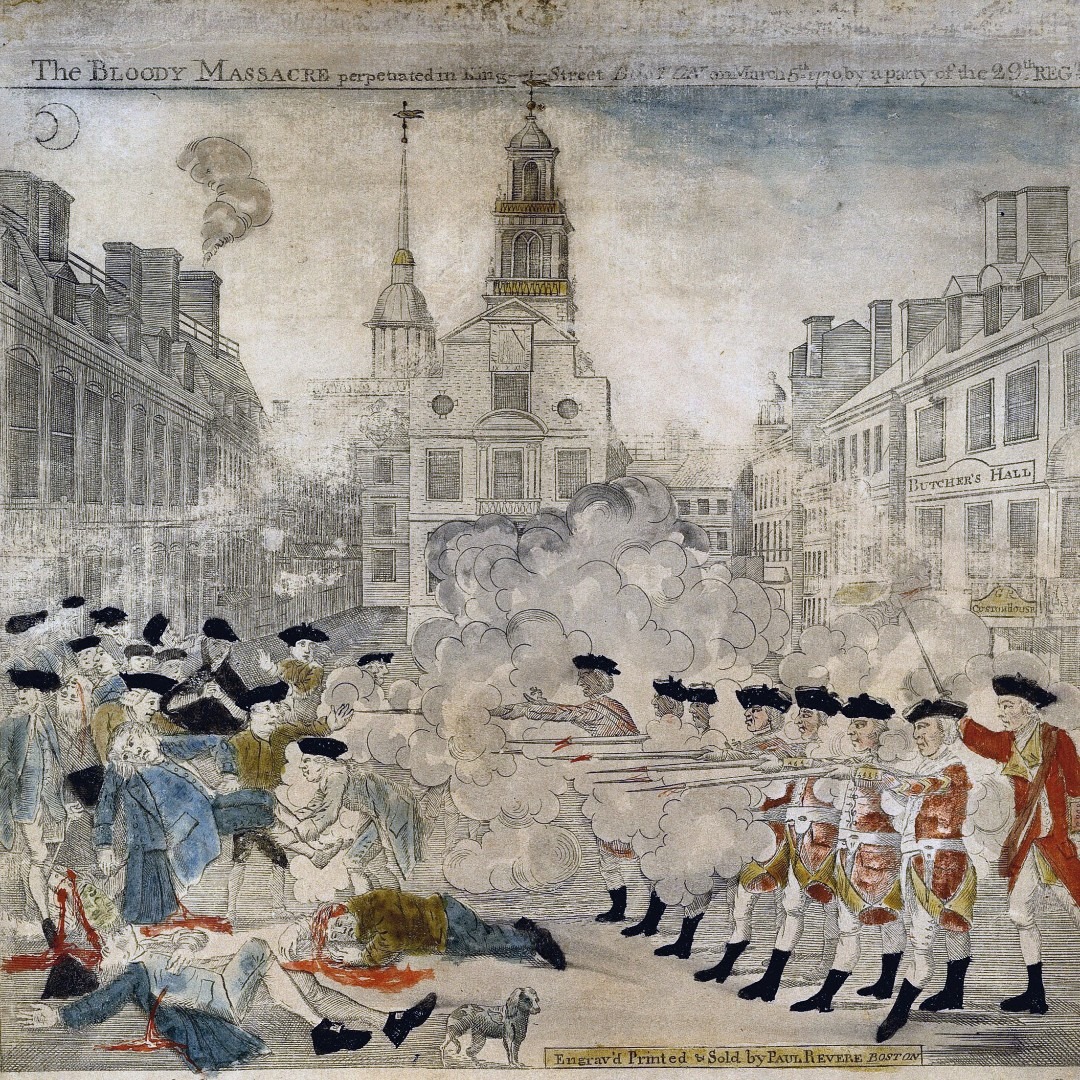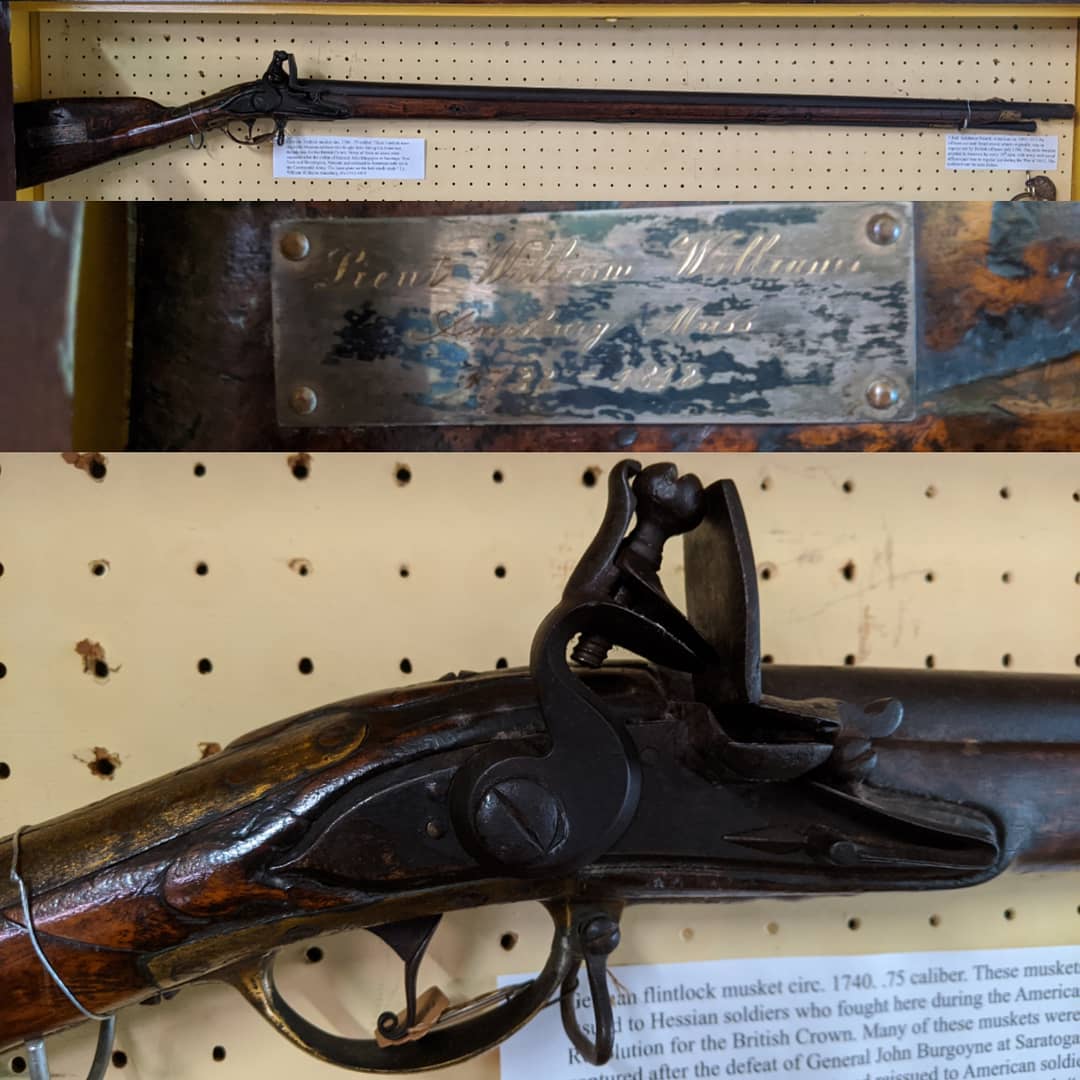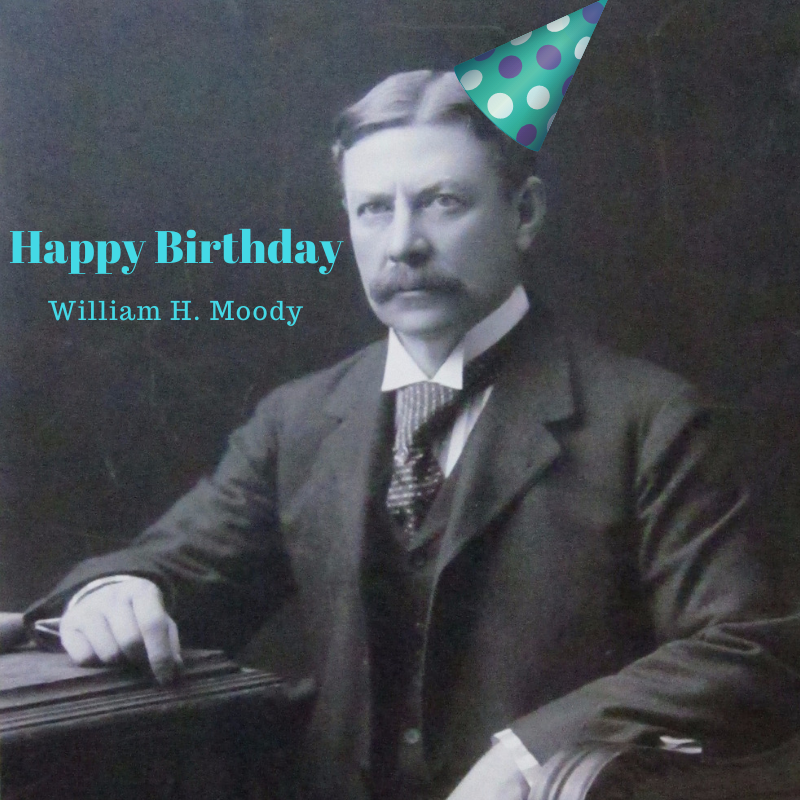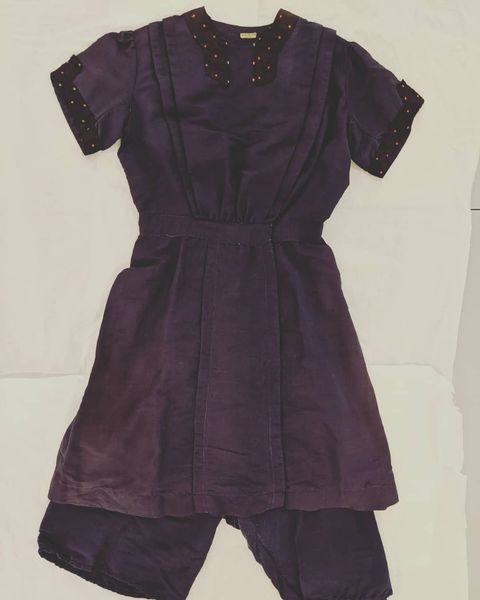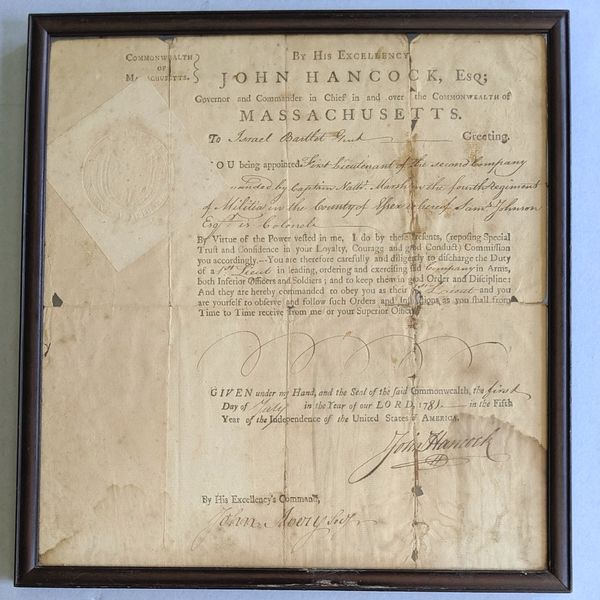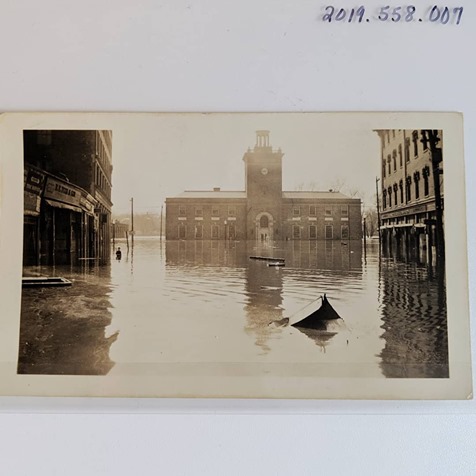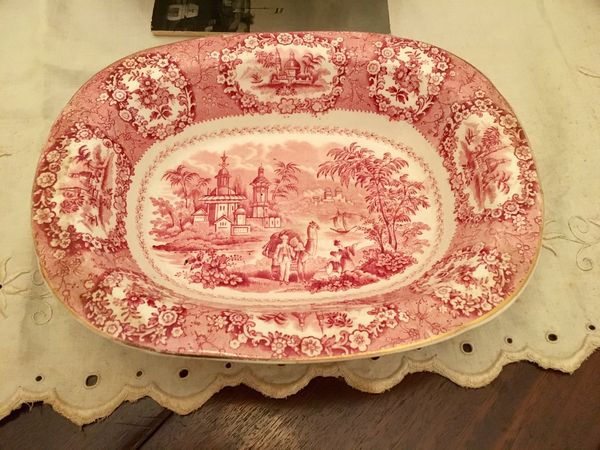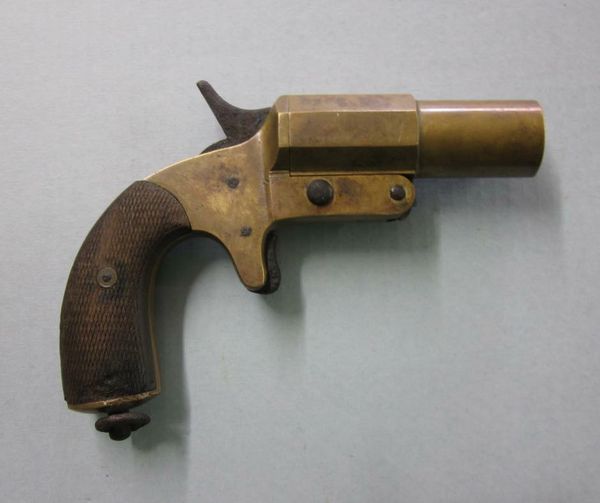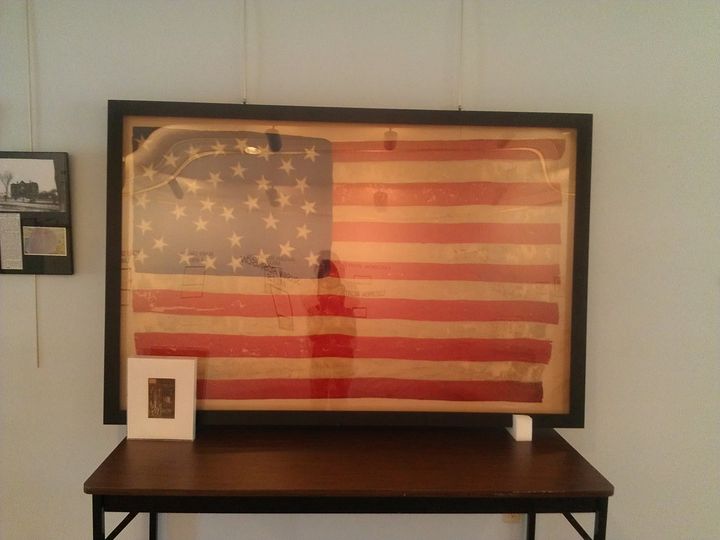

#OTD 383 years ago today (Febrary 26, 1638) was the first documented arrival of enslaved Africans in Massachusetts.
Seven months prior, the ship Desire had sailed to the West Indies, carrying Native people taken captive during the Pequot War (1636-38) who were to be sold as slaves. On its return, the ship carried cotton, tobacco, and enslaved Africans.
We do not know when the first enslaved African arrived in Haverhill, but sources indicate the presence of enslaved Natives and Africans in Haverhill in the late-17th and early-18th centuries.
By the mid-18th century, slavery was practiced throughout Massachusetts and in 1754 the colony conducted a slave census. A scan of Haverhill's response is pictured here; it documents the enslavement of eight women and eight men of "sixteen years old and upward" in the town. The total number increased from sixteen to twenty-five by 1764.
In 1783, the Massachusetts Supreme Court determined that slavery was unconstitutional in the Commonwealth, signalling the end of slavery in Massachusetts.
To learn more about slavery in Massachusetts:
Mass Moment:
https://www.massmoments.org/.../first-slaves-arrive-in...
Boston African American National Historic Site:
https://www.nps.gov/articles/the-middle-passage.htm
Massachusetts Historical Society:
https://www.masshist.org/endofslavery/index.php
Royall House & Slave Quarters (Medford, MA):
https://royallhouse.org/
Black Lives, Native Lands, White Worlds: A History of Slavery in New England by Jared Ross Hardesty (University of Massachusetts Press, 2019):
https://bookshop.org/.../black-lives-native.../9781625344571
Image: Scan of Haverhill's 1754 slave census courtesy of primaryresearch.org
Full Image Text:
[Illegible] Haverhill, December the 25th 1754
In observance of the within request we have - Numbered the Negro slaves that are within our town and district and we find there [scratched out] - is eight males and eight females that is sixteen years old and upward sixteen in the whole - - -
Joseph Badger Junior
Amos Peaslee
Benj Harrod
Assesors for Haverhill
Haverhill Return of Negro Slaves January 15 1755
8
8
16
Haverhil
#BlackHistoryMonth See this on Facebook
Frances Cole Lee (1884-1970) was an accomplished poet who wrote and published hundreds of poems over the course of her life. She was born in Haverhill and attended Haverhill High, where she met her husband, Joseph Lee, Jr (featured in an earlier post). They were married for over 50 years, until his death in 1955.
Lee had a natural talent for poetry, writing rhymes for her children when they were young, and she developed this skill through rigorously studying books of and about poetry that she found at the Haverhill Public Library. Later in life, she would include fellow Haverhillite John Greenleaf Whittier as among her favorite poets.
Lee first published a poem in the Christian Endeavor magazine, and she would go on to publish over 300 more, mostly in newspapers. In 1939, her poem "For Love of Life" was accepted for the poetry building at the World's Fair. The poem uses the passing of the seasons to explore both a mother's grief at losing a child and the joy that can still come from another child. Two books collecting her poems, Faith of our Fathers (1938) and Opal Dust (1944), can be found in Haverhill Public Library's Special Collections.
In a 1963 interview, Lee explained, “I write about everything - religious poems, war poems, nature . . . I write about life as I see it, as I’ve lived it myself, and as I see others live it.”
Starting during World War II, Lee also put her pen to writing letters condemning racial segregation, which she sent off to newspapers and other publications. She observed that "the Negro, brought here in chains . . . who has fought in every war and died for this country, still is treated like a second-class citizen. . . The time is going to come when this country will have to recognize the Negro, and give him his rightful place . . . “
Image: Frances Cole Lee, age 4, circa 1888. Buttonwoods Museum Collection.
-------
"For Love of Life" by Frances Cole Lee
It was a lonely nightfall; gray, dull hues
Of clustering leaden clouds veiled the sky,
Reflecting a dim and heartless sun
That sank to rest amid December’s chill.
Her mother-heart was cold – a frozen thing –
As on his grave she poured her tears,
Her little boy – her only one!
The cold, lonely mound was all she had
To bind her past with his lost life,
And he had been so fair!
December’s night was closing fast about her
Chilling all emotions – all save grief.
It was then she felt the tiny flutter
Just beneath her heart—her heart to nearly dead
That leapt again with joy and expectation!
December’s frozen night would pass –
The lovely spring and summer come and go –
And when the harvest fields were ripe
Beneath the reddening trees of Autumn glow,
Another tiny head would rest
Where his had lain.
She turned from that sad place
And, smiling through her tears,
She waited – waited joyously –
For Death had lost its sting
Amid abundant Life!
#CollectionsSpotlight See this on Facebook
Jan Ernst Matzeliger (1852-1889) was born in Dutch Guiana (Suriname) and immigrated to the United States when he was 20 years old. He eventually settled in Lynn, MA, and like many immigrant arrivals to the gateway cities of Massachusetts, he began working in a factory, in this case, a shoe factory.
By the late-1800s machines had already been well incorporated into the shoe-making industry. Developments such as the Rolling Machine and McKay Stitching Machine had increased the productivity of a single skilled shoe-maker from 10-15 shoes per day to up to 50 shoes per day. However, lasting (stretching the upper shoe leather around a mold and attaching it to the sole) still had to be done by hand. Matzeliger would solve this problem and dramatically revolutionize the shoe-making process.
He observed the skilled hand lasters at the factory, consulted reference books, and constructed his first prototype out of cigar boxes, elastic and wire. In 1883, after six years of development, he applied for a patent for his lasting machine. According to the National Inventors Hall of Fame, “Matzeliger's device was so complex that patent examiners had to see it in operation to understand it.” His invention would initially increase shoe production to up to 75 shoes per day, and after further tinkering, up to 700 shoes per day!
Matzeliger’s Lasting Machine would soon become widely adopted, including in the shoe factories here in Haverhill. Haverhill would grow to become the third largest producer of shoes in the country, behind only Lynn and Brockton, MA. Matzeliger’s invention truly transformed the industry that Haverhill was built on.
The vast majority of modern shoes today are still made using lasting machines based off of Matzeliger’s design.
To learn more about Jan Matzelilger’s life and invention, check out this Mass Moment: https://www.massmoments.org/.../matzeliger-demonstrates...
#BlackHistoryMonth
See this on Facebook
The Pendelton brothers - from left, Anthony, Marshall, Daryl, and Toney - are likely the most accomplished track & field family to walk the halls of Haverhill High. In the late-1960s and early-1970s, the brothers took home multiple state titles:
👟 1969: Anthony - State 100-yard dash
👟 1971: Marshall - State 100-yard dash (the first Hillie to do so in under 10 seconds)
👟 1973: Toney - State 100-yard dash AND long jump (the first Hillie to win two state titles in one season)
At the time when this photo was taken, about 1973, they had collected over 75 trophies to display in their family home on Lewis Street, including HHS’s prestigious Paul Wilner prize which Toney had recently been awarded at the end of his senior year. The Wilner prize was given to the member of the graduating class who had contributed the most to the athletic reputation of the school.
Daryl was also a trail-blazer by this time in his own right. As an 8th-grader, he had been the first Black child to receive the Boy of the Year award from the Haverhill Boys’ Club (now Boys & Girls Club of Greater Haverhill) in 1971. Though his high school athletic interests were drawn more to basketball than track & field, like his brothers, he was known for his speed.
Note: High school track & field would switch from yards to meters in the late-1970s.
#BlackHistoryMonth See this on Facebook
Joseph H. Lee, Jr. was a three-season athlete at Haverhill High, competing in football, baseball, and track & field. He is considered “one of the most outstanding athletes in Haverhill’s history” and was one of the earliest members admitted into the Haverhill Sports Hall of Fame.
Lee was born in Matthews County, Virginia and moved to Haverhill as a child. He entered Haverhill High in 1897. That fall, he began playing for the football team. The game of football was very different back then - the forward pass had not even been invented yet! - and all players played both offensive and defensive positions. In his time at Haverhill High, Lee was both an end and then a fullback. He became known for being able to really move the ball, scoring a total of 126 points for HHS, including 22 touchdowns.
During the spring, Lee would play centerfield for the baseball team. He also competed on the track & field team in 1898 and 1899. In March 1899, the track & field coach Linwood O. Town wrote the lyrics of a song to cheer on Lee at an interscholastic meet in Newburyport. It was to be sung to the tune of “Just One Girl” and went:
Now watch and see Joe Lee get ready
For his act, for his act,
He's a man who is cool and is steady,
That's a fact, that's a fact!
He does the high jump while he's running
With a might, with a might!!
Now what is the matter with Joseph?
Now, don't you know, he's all right!
Lee graduated Haverhill High in 1902 and was offered a scholarship to Dartmouth, but turned it down to marry his high school sweetheart, Frances Cole. He and Cole were married for over 50 years, and she will be featured in a post later this month. Lee lived out the rest of his life in Haverhill and died on Nov. 22, 1955 at the age of 72.
#BlackHistoryMonth See this on Facebook
In 2000, after 197 years of educating young people, the Bradford College shut its doors. A small school that had made its way from a preparatory academy, to a women’s junior college, to a co-ed liberal arts college; it had ultimately succumbed to an inability to cover operating costs.
Bradford had long adapted to survive a growing deficit, and eventually was defeated by it. The college had prioritized a low student to faculty ratio, catered to international students and students with disabilities, and avoided instituting high tuition costs that would put their students in debt. Arthur Levine, former president of Bradford College said “It's a tragedy when small colleges are forced to give way to mega-universities who only know a student by their social security number.”
Though not a large institution, Bradford had over 6000 alumni, and it had held a special place in its student’s lives. The buildings on campus would eventually be sold to Northpoint Bible College, who owns them today.
While Bradford College no longer exists in an institutional form, its memory lives on through the students and teachers who attended and taught there, and its history can be found in the records, photographs, and portraits that are preserved at the Haverhill Public Library Special Collections and the Buttonwoods Museum.
Additional photos from this post available on Facebook.
This post concludes the Bradford College series written by Digital Content Intern Rachelle Doane.
#CollectionsSpotlight See this on Facebook
Not only did Bradford College have remarkable students, it also had several notable professors as well. Andre Dubus II was one of those.
Andre, who is known for short story and essay writing, grew up in Louisiana, where he married his first wife and spent six years in the Marine Corps. After the Marines he obtained his MFA in creative writing from the Iowa Writers' Workshop and moved to Haverhill, where he spent the majority of his academic career teaching creative writing and literature at Bradford College.
In 1986, Andre was seriously injured in a car accident after having pulled over to help two people whose car had broken down. Several well-known and respected writers, including Stephen King and John Irving, held a fundraiser to help with his medical expenses.
Despite continuing to deal with several health issues resulting from the accident, Andre kept writing, and one of his books, Broken Vessels, which contained a collection of personal, non-fiction essays, was a finalist for the 1992 Pulitzer Prize in General Nonfiction. He also conducted a weekly writers' workshop in his home.
Andre would spend his remaining years in Haverhill and died in 1999. He is buried at Greenwood Cemetery, near his former home in Haverhill. Andre Dubus II not only left his mark on Haverhill and Bradford College, but his work was shared by many publications all over the U.S.
Additional images from the Bradford College Photo Collection at the Buttonwoods Museum available on Facebook.
#CollectionsSpotlight See this on Facebook
Roughly 100 years after Ann Judson and Harriet Newell attended Bradford Academy, the school had grown to be a women's only institution and began offering college-level courses. One of the notable people to attend during this time was Portia Marshall Washington, daughter of Booker T. Washington.
From a very young age Portia had had to be an independent person. Losing her mother while still an infant, she was brought up by a succession of caretakers, including two stepmothers. Her father, who devoted himself to his work, enrolled her in boarding schools from a young age. She was often socially isolated, usually being the only Black student at these educational institutions, but she learned to overcome her loneliness with the help of music. She would remember that her happiest times were when she was studying music at Tuskegee Institute.
Attending Bradford Junior College in the early 1900s, Portia would be the school's first graduate of color in 1905. Music continued to play a significant part in her life at Bradford, where she served as the accompanist for the Glee and Mandolin Clubs. She dedicated an original piano composition to the "Class of Nineteen Hundred Five" and gave a performance at their commencement ceremony that received high praise.
After graduation, she spent a further two years in Germany studying music; however, as happened often in that time period, her passion for music as a potential career was superseded by marriage and motherhood. Portia married William Pittman in 1908, and they had three children in quick succession.
In 1912, the Pittmans moved to Dallas, TX. Portia would become the organist and musical director of Dallas’ Macedonia Baptist Church, while also teaching music in the Dallas public schools system. Eventually, after 20 years of marriage, she separated from William and came back full circle to Tuskegee Institute to teach music.
In her later years, Portia became a dedicated caretaker of her father’s legacy, leading the campaign to establish the Booker T. Washington National Monument.
She died in 1978 at 94 years of age.
Additional iamges from the Buttonwoods Museum Collection available on Facebook.
#CollectionsSpotlight See this on Facebook
Ann Hasseltine was a contemporary and friend of Harriet Atwood (see last week’s post!). Although Ann was four years older than Harriet, they both attended Bradford Academy at the same time, which was where they began their friendship.
Born in Bradford, Ann came from a family that boasted four brilliant daughters who all made education a cornerstone of their lives. Not only did Ann become a school teacher like her older sisters, but she also devoted herself to religion and vigorously studied Christian texts.
In 1810 Ann met her husband Adoniram Judson. He studied at the Andover Theological Seminary and shared her religious zeal. In 1811 the American Board of Commissioners for Foreign Missionaries decided that Adoniram and Samuel Newell would go as missionaries to Asia. Ann was hesitant to agree to marry Judson and become a missionary, after all, there was a possibility that she would never see her family again as this could be a dangerous endeavor. However, Ann agreed, and on February 5, 1812, she and Adoniram married; on February 19 they set sail with the Newells.
By mid-June the two couples landed in Calcutta (Kolkata) where a small group of missionaries had already taken up shelter. The next decade consisted of many trials and tribulations for the Judsons. They ended up first in the Isle of France (Mauritius) and then Burma (Myanmar). They lost a child, Ann faced sickness, and they dealt with rising political tensions.
In 1824 Adoniram was arrested by the Burmese for being a supposed British spy. During his imprisonment, Ann gave birth to their daughter while battling yet another illness. After 21 months, Adoniram was released and the family traveled to another part of Burma. Sadly, Ann and the baby became sick once more and neither survived this time. Ann passed at just 36 years old. The Judsons' time in Burma had a profound effect not only on the local Christian missionary community that lived there, by whom they are considered to be saints, but they also provided a historic example of a missionary couple abroad to Christians in the United States..
#CollectionsSpotlight See this on Facebook
After the American Revolution, Haverhill, like many towns, struggled with debt from the war. Located on the Merrimack River, Haverhill capitalized on this feature to become a small, prosperous port town, importing and exporting from both larger shipping ports in New England and abroad. This is the Haverhill in which Harriet Atwood grew up.
Not much is known about Harriet's early years except that she had eight siblings and likely led a pretty nondescript life as a child in a middle-class family. Harriet entered Bradford Academy shortly after it opened in 1806 and was 13 years old when the Second Great Awakening arrived in the region. She quickly devoted herself to a religious life.
However, when her suitor, Samuel Newell, proposed and insisted on a missionary life abroad, Harriet initially did not want to go. Consumed by guilt that she was ignoring God’s will, she eventually accepted his proposal, and they married. She was 18 years old.
The couple soon left the United States for India with the also newly-wed Judsons, but shortly after their arrival in Calcutta (Kolkata), the Newells were forced to evacuate. They decided to head for the Isle of France (Mauritius). Their troubles continued when the six-week journey to the Isle of France dragged on for three months.
By this point, Harriet was heavily pregnant, and she gave birth to her baby girl during the journey. Due to the rough conditions at sea, the baby’s health quickly deteriorated and she lived for only five days. Soon after, Harriet showed signs of consumption (likely tuberculosis) which she did not have the strength to fight. Less than eight weeks after giving birth she passed away at only 19 years old.
While Harriet's story is short and saddening, her personal papers were edited and published as the first memoir of an American missionary wife, and her self-sacrifice and desire to follow God’s will would inspire a future generation of missionaries. Her life and that of Ann Hasseltine Judson (stay tuned for next week’s post!) set a historic precedent for women as they were the first female missionaries to go abroad from the United States.
This portrait of Harriet Atwood Newell (1793-1812) is part of the Buttonwoods Museum collection.
#collectionsspotlight See this on Facebook
Bradford College, originally known as Bradford Academy, is a legacy of the Bradford/Haverhill community. It helped pave the way for the future as one of the first institutions to actively support women’s education in the United States.
Its doors first opened in June of 1803 as it welcomed 51 students, the majority of which were girls. The Academy was originally opened as a way for providing continuing education for young people who had exhausted all the educational resources in the area. While it started as a co-ed school, male enrollment declined and in 1836 they made the decision to turn it into a women’s school which would go on to offer college level courses.
Several high-profile missionaries from the United States went to school here, such as Ann Hasseltine Judson, along with other notable people like Portia Marshall Washington Pittman, Esther Louise Forbes, and Andre Dubus III.
While the college closed in 2000, we work to recognize its rich history. This post is the first in a mini-series that will highlight a few important figures associated with Bradford College over its nearly two centuries of operation. Follow along as we explore some of the rich and historic background of Bradford College!
This series was created by Rachelle Doane, Digital Content Intern.
See this on Facebook
#DidYouKnow that the junior prosecutor at Lizzie Borden's trial was William H. Moody?
Moody had begun his practice of law in Haverhill after being admitted to the bar in 1878. At the time of the trial, he was the elected Essex County district attorney and this would be his first murder case. In his opening statement for the prosecution, he described the crime as follows:
"Upon the fourth day of August of the last year, an old man and woman, husband and wife, each without a known enemy in the world, in their own home, upon a frequented street in the most populous city in this County, under the light of day and in the midst of its activities, were, first one, then, after an interval of an hour, another, severally killed by unlawful human agency.”
Moody would finish out his career in law as a Supreme Court Justice, serving on the Court from 1906 to 1910.
For more information about Moody's role in the prosecution: http://lizzieandrewborden.com/.../the-extraordinary...
See this on Facebook
This object is a celluloid lady's list, likely from the 1880s or 1890s. The days of the week are printed on the edges of the "leaves" of the list. But notice that there are only six leaves! Sunday was purposefully left out, because it was assumed to be a day of rest. A woman would write her daily chores in pencil, and they could be easily erased for the next week.
What is your preferred way to keep on top of daily tasks?
#CollectionsSpotlight See this on Facebook
Today we're sharing an object from the collection that many people today might find somewhat unusual, strange, and perhaps even grotesque; however, when it was made in the nineteenth century, it would have been considered none of those things. It is a wreath made of human hair. Let us explain . . .
When a loved one passes away, there is an age-old desire to hold onto something personal of that person to maintain a connection to them across the barrier of life and death. Hair can be one of the most personal items a person has, and for a long time, locks of hair from the deceased were used to make mourning jewelry. This practice was further expanded to include wearing locks of hair from loved ones still healthy and living. You may even recall from a collections post last month, that the brooch on our Abigail Adams dress contains locks of hair from herself, her husband, and her eldest son (John Quincy).
What started as a practice to memorialize a loved one soon became a popular hobby by the mid- to late-19th century. Hairwork could be used to tell a family's history much like a family tree might. Groups, such as churches and schools, would gather hair from all their members and use it to make a community hair wreath. Girls traded locks of hair like later generations would trade friendship bracelets. Mothers would save a lock from their child’s first haircut and frame it or wear it as jewelry - a practice continued by some mothers to this day.
This particular hair wreath, currently on display in the Duncan House, was made by Mrs. Harriet Cogswell (nee Smith) and was donated by Mrs. William W. Emerson. Not much more is known, but just by looking at it, you can tell a great deal of time and work went into this detailed wreath.
Some families today still have hairwork jewelry or wreaths, passed down through the years, as they are very resistant to decay and keep well. Let us know if you are familiar with or possess any hairwork!
#CollectionsSpotlight
See this on Facebook
When our curator unwrapped this object for the first time, she was sad because she thought the newsprint wrapping it had been stored in had stuck to the stones. Can you see the bits of paper affixed to the stones?
Upon closer inspection, she discovered that it is, in fact, a box. And inside she found a numbered list of mineral specimens! The numbers on the list correspond to the numbered pieces of paper attached to the stones. So it's both a beautiful mineral box and an educational tool!
It is now one of our curator's favorite objects in the collection.
Do you have any clever keepsakes like this?
#BehindTheScenes #CollectionsSpotlight
See this on Facebook
Every town has its own stories and legends that are unique to it, and these stories can take on a special importance in our collective memory. With Haverhill's long history, we are no stranger to local legends. For example, the Bartlett mirror figures in a story involving newly-elected President George Washington.
Washington visited Haverhill Nov. 4-5, 1789, while on a tour of New England. In his diary, he commented that the town stands "in a beautiful part of the country." He wrote of walking through town and visiting a "manufactory, upon a small, but ingenious scale" that produced duck (heavy cotton fabric). It was on his departure from Haverhill that the mirror came into play.
The ferry to cross the Merrimack River was delayed, so he waited in the Bartlett home and used this mirror to fix and straighten his wig. (The glass has since been replaced, but the frame is original.) This simple story, passed down through the years, can’t be confirmed with certainty; Washington doesn't mention it in his diary and another version of the story indicates that he specifically *did not* go into the Bartlett home that day for fear of showing favoritism. Regardless, Washington left an impression on Haverhill as our Washington Square and Washington Street were both named in honor of this visit.
At first glance, this seems like a relatively insignificant object and story, but to Haverhill it holds special historical significance. There are many objects with special George Washington stories that can be found in various towns and communities, and like our mirror, the confirming evidence is often unsatisfactory. It is understandable that so many communities desire to feel that they have a direct connection to a man so central to our country's beginnings. However, this idolization can become so great that it obscures that he was, in fact, not a mythical figure, but a man who did both good and bad things. We can’t just take the good and leave out the bad. Washington was a hero to those citizens of Haverhill in 1789, but he also enslaved over 300 people at his estate in Virginia at the same time.
Now more than ever, it is important to view history with a critical eye. To parse out where the "good" stories we tell have been used to excuse the "bad" stories. Objects like the Bartlett mirror remind us that while George Washington was a legend-making hero to some, he was, at the end of the day, still a human with faults of his own.
The Bartlett mirror is part of the Buttonwoods Museum collection.
"Portrait of George Washington" (1785) by Robert Edge Pine, courtesy of Wikimedia Commons.
See this on Facebook
This gorgeous dress of brocade silk belonged to none other than Abigail Adams. She wore this while in England, as her husband John Adams was serving as the first American ambassador.
Brocade silk is a term for a dress which is richly decorated and often made with colored silk, and the pattern is typically only seen on the top of the fabric.
John had already been in Europe for some time when Abigail began making preparations to join him. In April of 1783, she sent her two younger sons, Thomas and Charles, to live and study with her sister, Elizabeth Smith Shaw, and brother-in-law, Rev. John Shaw, who resided in Haverhill. The boys were tutored by Rev. Shaw alongside their cousin, William (Billy) Cranch. Abigail's eldest son, John Quincy, would initially join his parents in Europe, but would also journey to Haverhill to study under Rev. Shaw for several months prior to starting at Harvard in March 1786.
Billy Cranch's mother, Mary Smith Cranch of Quincy, was another sister of Abigail's and it was to her that Abigail sent this beautiful dress. Mary's granddaughter, Mary Cranch Norton, married Jacob How of Haverhill in 1830, and her granddaughter, Lizzie Norton Mason, donated the dress to the Museum.
The brooch pictured on the dress even contains a lock of Abigail Adams hair, along with locks from her husband and her eldest son.
#CollectionsSpotlight See this on Facebook
Today, on Juneteenth, we reflect on how the words freedom, liberty, and equality are ideas that cannot simply be spoken into existence. They must be made real by actions. The Declaration of Independence says "all men are created equal" and that each of them have certain unalienable rights, including "Life, Liberty, and the pursuit of Happiness." We will be celebrating this document, these words, and the actions that followed them in two weeks time. But those actions of revolution and nation-building did not produce a reality where those words applied to Black Americans.
But these words do matter, and they inspire us to take actions to make them real. On the individual level, some enslaved people fought to make these words real through self-emancipation and other forms of resistance. On the national level, it took years of advocacy and a civil war for the Emancipation Proclamation to declare on January 1, 1863 that enslaved people "were, and henceforward shall be free." The Union Army took those words and enforced them in Confederate territory. And so Juneteenth celebrates that day, June 19, 1865, when the very last enslaved people of Texas were brought those words, made into reality, over two years later in Galveston.
Another century passes, and all of these ideas written of in 1776 were still not real for Black Americans. Demonstrations, protests, rallys, and marches erupted across the country in the 1960s, including here in Haverhill. On March 14, 1965 over a 1,000 Haverhill residents gathered for a rally in protest of the violence in Selma, over 100 members of the local branch of the NAACP marched around City Hall, and funds were raised to support those travelling to Selma to march with Dr. King.
Here we are in 2020, 55 years later, and the need for action continues. These last few weeks have seen protests across the country once again, including another protest in our own community, led by high school students, which brought out 1,500-2,000 people on Saturday. They see that that unalienable right of Life isn't a reality for Black Americans and that it still must be shouted, "Black Lives Matter!"
#BlackLivesMatter #MuseumsAreNotNeutral See this on Facebook
On July 30th 1878 the Bell Telephone Company officially became incorporated in the state of Massachusetts. Thomas Sanders (pictured here) was essential in helping it survive its earliest years to become the giant conglomerate we know today.
Sanders, a successful leather merchant from Haverhill, had met Alexander Graham Bell when he hired him to tutor his deaf son. He soon became very interested in Bell’s inventions and then became the chief financial backer and treasurer for his company. One of the most exciting parts of Sander's story is that the very first phone call in Haverhill was made from City Hall to his home.
⠀⠀⠀⠀⠀⠀⠀⠀⠀
Going through a couple mergers, the company would eventually create the first long distance network with a viable cost structure. In December 1899, AT&T would purchase its own parent company, the American Bell Telephone Company, which had assets valuing $10 million.
⠀⠀⠀⠀⠀⠀⠀⠀⠀
Sanders would go on to build a beautiful home, Birchbrow, overlooking the body of water that we know today as Plug Pond. He would live there until his death in 1911; unfortunately, the home no longer stands today.
This portrait is held in the Museum's collections.
#CollectionsSpotlight See this on Facebook
It's wedding season!
⠀⠀⠀⠀⠀⠀⠀⠀⠀
Did you know that it was often typical for 19th-century weddings to take place in the late fall after harvest had finished?
⠀⠀⠀⠀⠀⠀⠀⠀⠀
Weddings were often held on a weekday morning and most brides did not wear white as it was too expensive and impractical. For example, this wedding dress was worn by Sarah Whittier for her wedding in 1859. Usually the wedding would then be followed by a wedding breakfast.
⠀⠀⠀
#CollectionsSpotlight See this on Facebook
Today is the 250th anniversary of the Boston Massacre. In response to verbal and physical harassment from a mob, British soldiers fired - without orders - into a crowd, killing five people. About a month later (April 9, 1770) Haverhill would call a town meeting and, in protest of this event, voted for several measures to ensure that no British goods would be imported or sold in their town.
It was voted that “we will by all Lawful ways & means Exert ourselves and Expose to shame & Contempt all persons who shall offer to make sale of British Goods Imported Conterary to the agreement of marchents” and warned that “all persons who shall violate or Counter act this vote and resolve shall be rendered Incapable of being Chosen to any office of profit or Honouer in this Town.” Finally, they also offered thanks to both “the truly patriotic marchants who have acted with firm resolutions . . . tho much to their private loss” and “to the Town of Boston and the several Towns In this province & Else whare which have by their spirited resolves prevented the sale of British Goods lately Imported In the principle Towns & places in the Colonies.”
#OTD #bostonmassacre See this on Facebook
German Flintlock Musket, 18th Century. A plate on the butt of the musket identifies it as having belonged to "Privt William Williams, Amesbury Mass, 1732-1812."
Williams had fought in the French and Indian War and was one of a dozen men from Amesbury who joined the Continental Army in Oct. 1776.
This type of musket was often issued to Hessian soldiers fighting for the British and a great many of them were captured over the course of the War. They would then be reissued to American soldiers in the Continental Army. Williams may have acquired this particular rifle in a similar way.
#CollectionsSpotlight See this on Facebook
Happy 166th birthday, William H. Moody! 🎉
William Henry Moody was born December 23, 1853, in the Byfield section of Newbury, MA. He lived in Haverhill for most of his life. In addition to being a prosecutor in the Lizzie Borden trial, he served in Congress as the Representative for Massachusett's 6th district. He was a member of Theodore Roosevelt ’s cabinet as secretary of the Navy and then attorney general. He was later a Supreme Court Justice. He was also the first president of the New England Baseball League and attended the first World Series game in 1903 between the Boston Americans (later the Red Sox) and the Pittsburgh Pirates. He shares a birthday with Haverhill’s Hannah Duston.
For more info, see our website (buttonwoods.org) or visit the Moody Exhibit at the Buttonwoods Museum when we reopen for tours on May 1st.
#OTD See this on Facebook
Now on the other side of Labor Day weekend, summer is officially winding down, but we have our fingers crossed for at least a couple more beach days.
#CollectionsSpotlight See this on Facebook
While the Declaration of Independence is certainly the most famous document to bear John Hancock's signature, we do have an original Hancock flourish in our museum's collection. This is a military commission issued in 1781 to Israel Bartlett of Essex County, during Hancock's first term as Governor of Massachusetts.
#CollectionsSpotlight See this on Facebook
This photo, taken on Friday, March 20, 1936 and depicting the effects of the Great Flood of 1936 in Haverhill, was donated to the museum a couple weeks ago. One of our collections volunteers worked on cataloging it (and some others) today. Each photo was assigned a unique number and placed inside a protective sleeve.
See this on Facebook
Are you hosting a Super Bowl party this weekend?
From the Buttonwoods Museum collection, a one of the super bowls on display in the c. 1814 Duncan House dining room. The Duncan family were merchants with trade connections around the globe. The red bowl pictured here is from England. More photos on Facebook.
See this on Facebook
On the 11th hour, of the 11th day, of the 11th month of 1918, World War I came to an end. Today we mark the 100th anniversary of the end of the Great War.
Pictured here: a flare gun manufactured in France some time between 1916 and 1918, now in the Buttonwoods Museum collection.
See this on Facebook
Congratulations Boston Red Sox– 2018 World Series Champions!
Haverhill has a long connection to the World Series?
1) Secretary of the Navy William H. Moody, first president of the New England League and a longtime Haverhill resident, attended the first game of the very first World Series on October 1, 1903. The Pittsburgh Pirates won the game in Boston, but the Boston Americans (later the Red Sox) won the series. For more on Moody’s baseball involvement: https://whmoody.wixsite.com/william-h-moody/baseball
2) Hal Janvrin, who played shortstop and second base, won the World Series twice with the Red Sox. In 1915, the Red Sox beat the Philadelphia Phillies, and in 1916, beat the Brooklyn Robins. Janvrin was born in Haverhill and attended Boston English High School.
3) Mike Ryan, a catcher for the Red Sox, played in the 1967 World Series. The team lost to the St. Louis Cardinals in seven games. Ryan was born in Haverhill and attended St. James High School.
4) Carlos Peña, first baseman for the Tampa Bay Rays, played in the 2008 World Series, which the Philadelphia Phillies won four games to one. He was born in the Dominican Republic and attended Haverhill High School. (Photo: Don Johnson 395)
Do you know of anyone else connected to the World Series?
See this on Facebook
Happy Flag Day, everyone!
Here's a picture of our favorite one in the collection. It was hand-made by Nancy Buswell over the course of 3 days so that the Haverhill boys going to defend the Capital during the Civil War, would have a flag to carry.
See this on Facebook
